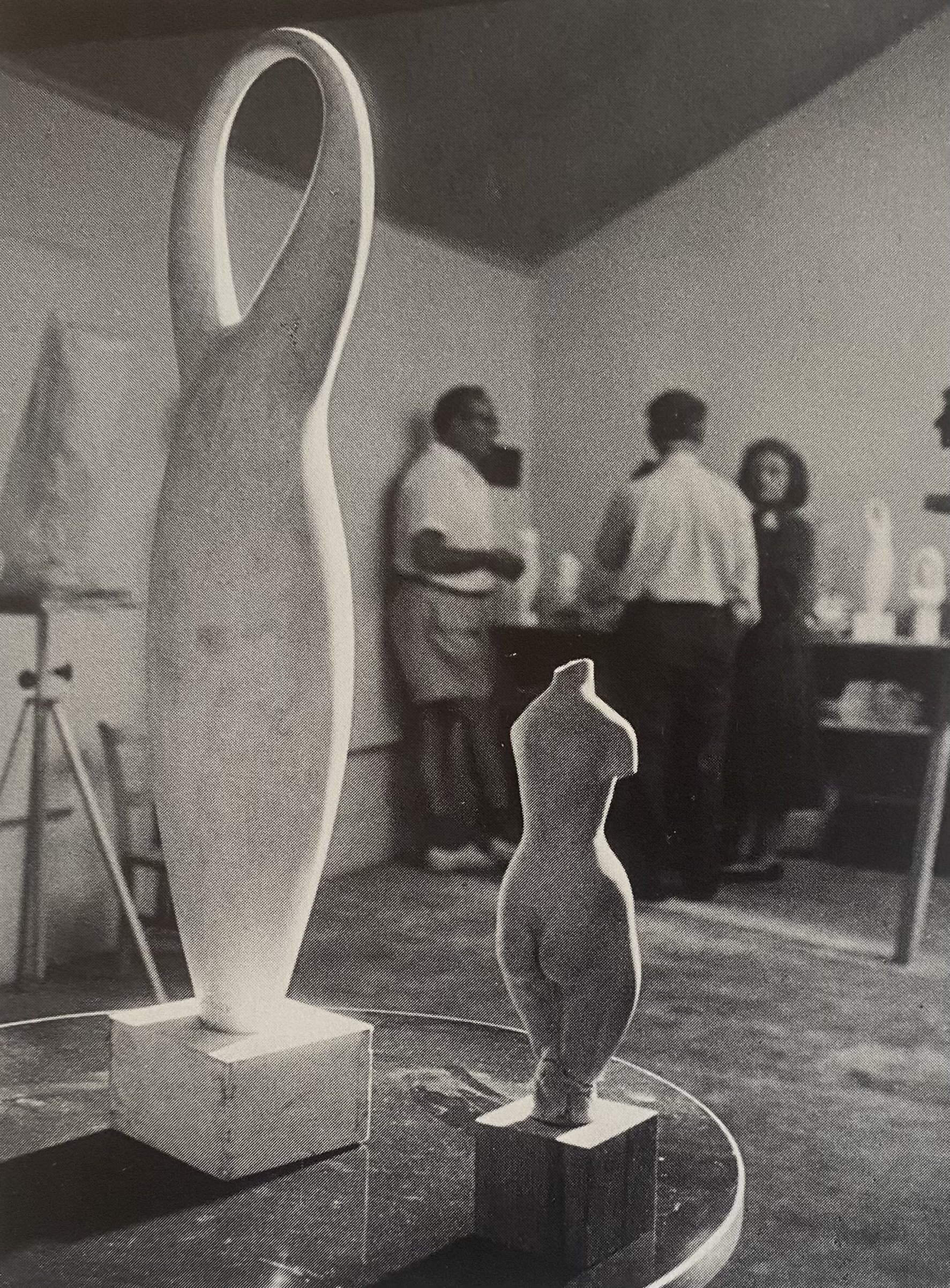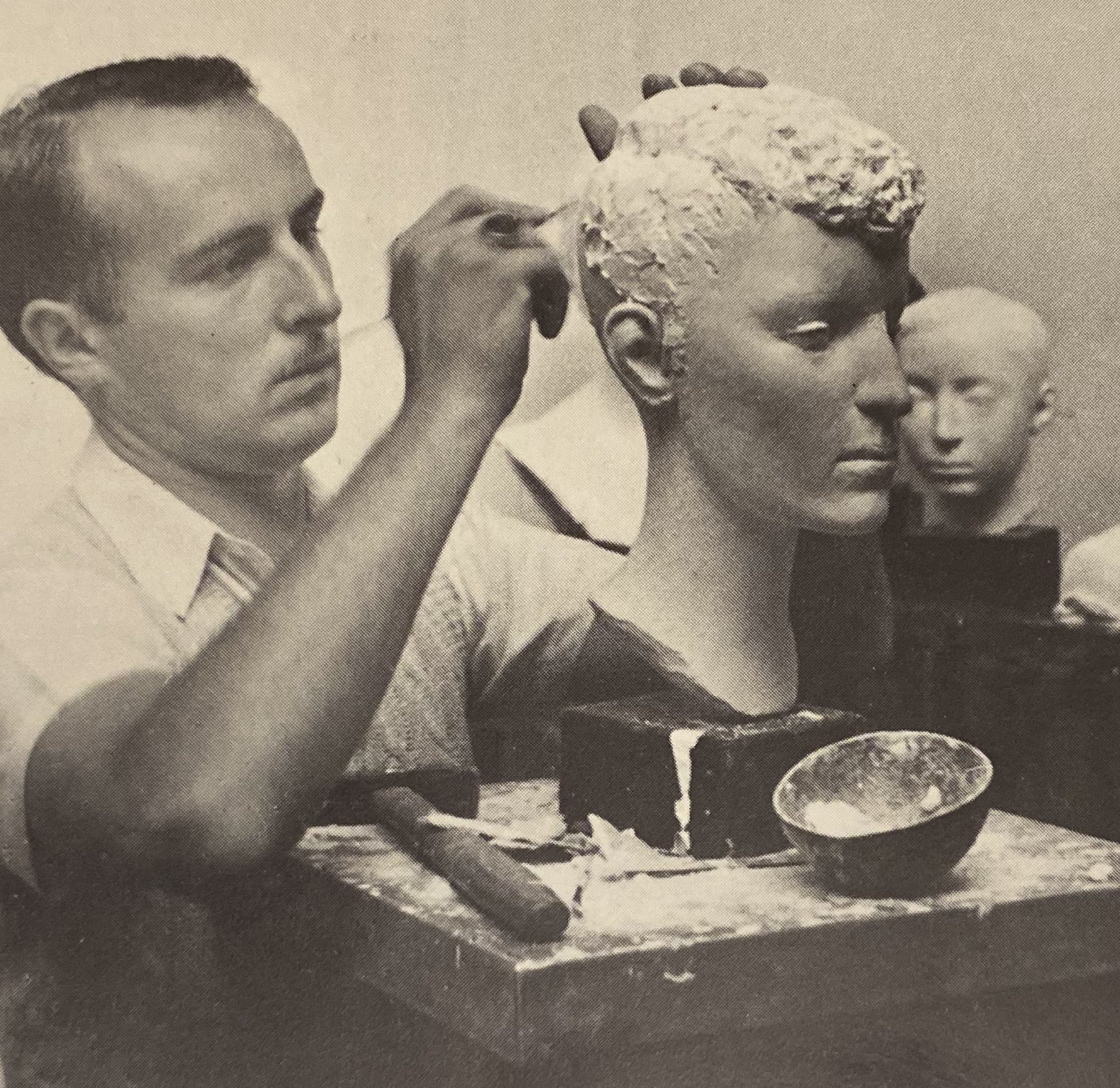
Hans Gerber
Hans Gerber (1910-1978) was a Swiss artist who best known for his idiosyncratic collages, which have rarely been exhibited outside his native country. He attended the Kirchenfeld Gymnasium in Bern, Switzerland graduating in 1930. From 1930 to 1932 he studied English at the Universities of Bern, Lausanne and Munich. Under the influence of the work of sculptor Wilhelm Lehmbruck, Gerber discovered his own artistic talent and entered the studio of sculptor Hans Stangl in Munich. In 1934 he settled in Ascona and created his first portraits and small sculptures. In 1934 he moved to Zurich, where he met the sculptor Hermann Haller. He became a member of the "Society of Swiss Painters, Sculptors and Architects" and took part in the exhibitions "Young Switzerland" at the Kunsthaus Zurich and "Young Bernese Artists" at the Kunsthalle Bern. His first solo exhibitions followed in the Galerie Palette in Zurich.
In 1950 he moved to Buchillon on Lake Geneva with his partner, the writer, watercolorist, and draftsman Hans Walter, who later authored a monograph about Gerber’s work. From 1950 to 1954 Gerber turned away from figuration toward pure abstraction, while also adding color to his work. These new developments would, in the mid-1950s, lead him to his signature medium for the next two decades: collage, a form of artistic expression that he continued to develop in a variety of ways until his death. Hans Walter elaborates on the role collage would play in Gerber’s life and work: “Paper, whether plain or printed, smooth or rough, soon became for him the most important, if not the only, means of expressing his inner wealth of images.”
Gerber’s work can be found in the collections of Kunstmuseum Thun, Kunstsammlung der Villa Schüpbach in Steffisburg, as well as in Stiftung Hans Ulrich Schwaar in Langnau. Kunstmuseum Thun is currently planning a major survey of Gerber’s work to open in 2026.
Hans Gerber, Untitled, 1957, mixed media collage on board, 10 x 12 3/8 inches
Hans Gerber, Collage 64 / 228, 1959/1964, mixed media collage on board, 13 1/4 x 6 7/8 inches
Hans Gerber, Collage 69 / 773, 1969, mixed media collage on board, 5 3/4 x 7 inches
Hans Gerber: Collagen. Text by Hans Curjel and conversation between Hans Gerber and Hans Walter. Zurich and Stuttgart: Aldus Manutius Verlag, 1964, together with slipcase, 7 1/4 x 5 inches
Hans Gerber: Der Mensch und sein Werk, by Hans Walter, monograph published by Benteli, Bern, Switzerland, 1982, 9 3/4 x 9 1/4 inches
Hans Gerber, c. 1960s
Work by Hans Gerber, c. 1940s
Work by Hans Gerber, c. 1940s
Hans Gerber, c. 1970s
Hans Gerber, c. 1930s-40s
Hans Gerber, c. 1930s.











